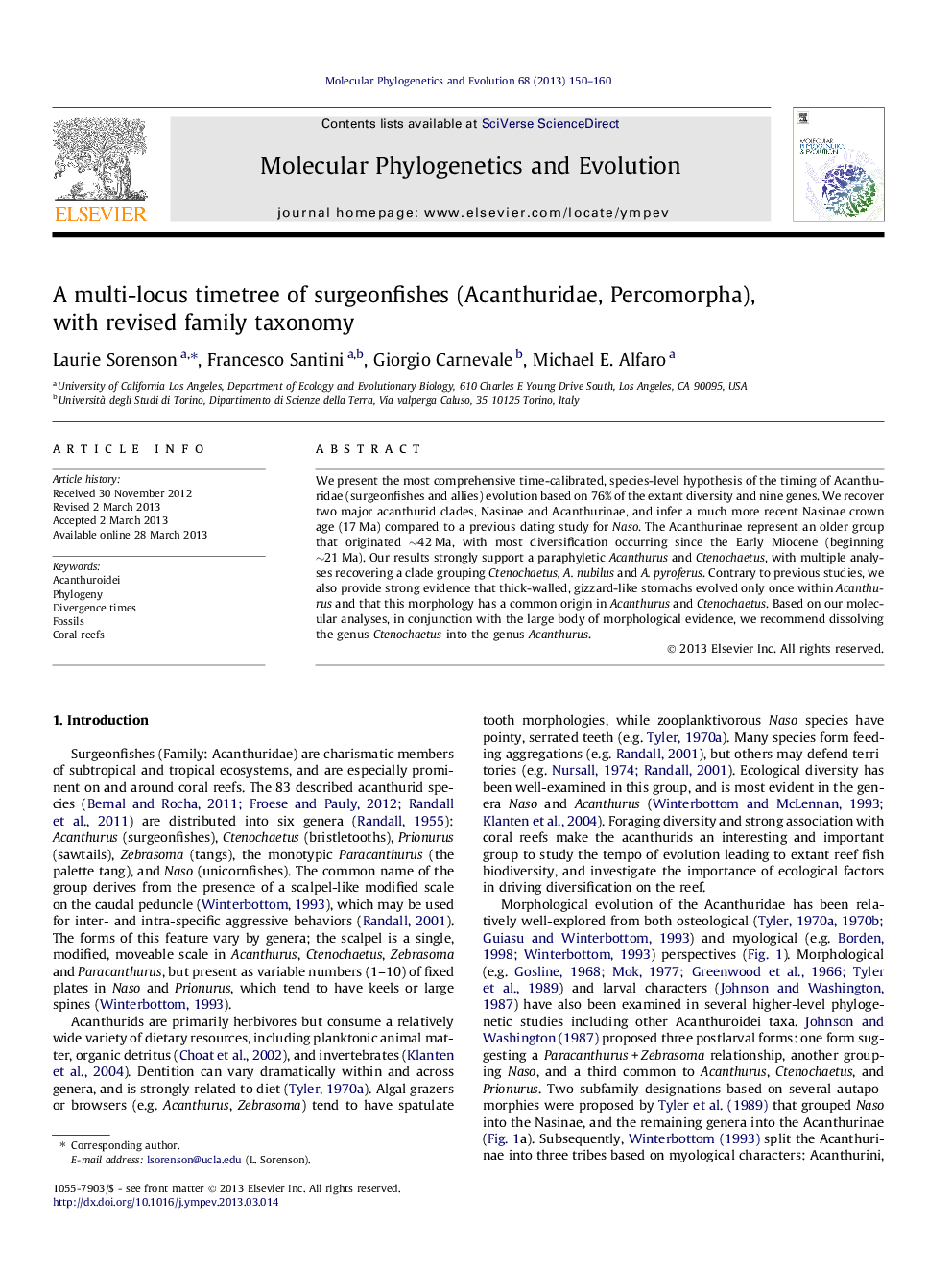| Article ID | Journal | Published Year | Pages | File Type |
|---|---|---|---|---|
| 2833915 | Molecular Phylogenetics and Evolution | 2013 | 11 Pages |
•We constructed the most comprehensive, time-calibrated molecular phylogeny to date.•The tree includes 76% of spe cies and nine loci.•We find monophyly of Acanthuridae, Acanthurinae, and Nasinae.•Surgeonfishes originate in the Early Eocene and radiate in the Miocene.•We suggest dissolving Ctenochaetus into Acanthurus.
We present the most comprehensive time-calibrated, species-level hypothesis of the timing of Acanthuridae (surgeonfishes and allies) evolution based on 76% of the extant diversity and nine genes. We recover two major acanthurid clades, Nasinae and Acanthurinae, and infer a much more recent Nasinae crown age (17 Ma) compared to a previous dating study for Naso. The Acanthurinae represent an older group that originated ∼42 Ma, with most diversification occurring since the Early Miocene (beginning ∼21 Ma). Our results strongly support a paraphyletic Acanthurus and Ctenochaetus, with multiple analyses recovering a clade grouping Ctenochaetus, A. nubilus and A. pyroferus. Contrary to previous studies, we also provide strong evidence that thick-walled, gizzard-like stomachs evolved only once within Acanthurus and that this morphology has a common origin in Acanthurus and Ctenochaetus. Based on our molecular analyses, in conjunction with the large body of morphological evidence, we recommend dissolving the genus Ctenochaetus into the genus Acanthurus.
Graphical abstractFigure optionsDownload full-size imageDownload as PowerPoint slide
